- Home
- Patrick Robinson
The Shark Mutiny (2001) Page 30
The Shark Mutiny (2001) Read online
Page 30
Taiwan’s problem right now was communication. The military systems were in such bad shape it was nearly impossible to transmit a message, never mind a detailed conversation or report. Certainly there were small units stationed near Taipei that were aware of air activity out on the northern region. And they may even have assumed there were troop drops being made. But they had no forces in contact, no Intelligence, no way of knowing what the invasion force was doing, certainly no way of assessing whether a beach landing was in any way imminent.
Meanwhile the Chinese were thundering forward with their two steel defense perimeters, one astride the road from Taipei, just north of Yangmingshan, the other astride the main approaches to the beach landing areas from Keelung—clean across the road from Feitsuiwan.
They strived in pouring rain all through that Sunday, digging trenches, preparing ammunition, setting up machine guns. The ground mission of China’s 15th Airborne Division was to stop a Taiwanese counterattack at any and all cost. And they had to be ready to protect the landing craft of the big Chinese Marine Division when it hit the beaches, complete with its own armor, artillery and air defenses, early on Monday morning, May 28.
And ready they were. While the main forces had been digging in, a small Chinese marine force, similarly trained to the U.S. Navy SEALs or Britain’s Special Boat Squadron, had checked out and cleared the landing area, marking the lanes, staking out their own positions to supply local machine-gun cover while they guided the landing craft in.
By 0300, three hours before the sun would clear the distant horizon, the sea was suddenly alive with the unmistakable signs of invasion, tiny black landing craft, packed with armed troops streaming in toward the shallows. And as the sky brightened and long, pink fingers began to form among the predawn rain clouds, the sound of the ramps echoed along the shoreline. Big, clanging ramps, manhandled by shouting troops. And down those ramps came the big tracked vehicles, engines howling, as they drove down the steep gradients and splashed into the surf, driving forward, looking for their lane lines on the beach.
Out beyond the waves in the calmer waters a half mile offshore there was a kind of controlled chaos, as ships maneuvered into position, the hydraulic docks opening up to allow more and more of the landing craft to break cover from the LCDs. This was D-Day Normandy on only a slightly smaller scale, and if any Taiwanese units were watching, they were watching the opening round of an unwinnable fight.
Six hours later, everyone who was going ashore had gone ashore. And the ships were turned back across the strait to reload with thousands and thousands more troops, and this time they would be joined by dozens of civilian ships, all making their way to the northern beachhead out on the Chinsan sands.
Rarely had a capital city the size of Taipei experienced such mass confusion. Its three million inhabitants—and three million more in the surrounding district—knew, of course, their island was under attack from the Republic of China. But the Chinese had thus far gone to extraordinary lengths to avoid harming even one building in the great northern metropolis. They had attacked, exclusively, military installations and military communications, with the exception of the international airport, which they completely disabled but left the passenger terminals untouched.
Thus for the people of Taiwan there was television news bringing hourly reports of the continuing air battles over the central waters of the strait. There were reports of the destruction of the Navy base in the Penghu Islands. And there were further reports of the Taiwanese Navy preparing to defend the shores against a mass invasion from the sea. But nothing was being reported from the beachhead, and there were no signs of bombs, rockets, shells or missiles. The city seemed normal, save for the tension and fear. But there were no sounds of war. It was as if China had decided to shut down the military effectiveness of Taiwan, but possibly nothing further.
Thus Taipei itself continued to function. Shops opened as usual, schools and universities remained active, traffic was its usual hideous mess, but buses ran and people went to work. Hotels stayed open and thousands of tourists trapped in the city booked in for extra weeks. It was impossible to leave Taipei, but equally impossible to travel to Taipei. The major long-distance freeways were virtually deserted, the railroad station was dead, the airport was dead, the runways wrecked. And a curious, uneasy calm enveloped the capital, even though, on the surface, there was the appearance of normality.
The United States had informed the government it would begin an evacuation of its citizens caught in the entanglement of the Chinese invasion, but it quickly became apparent that there was nowhere in the north of the island where a U.S. passenger aircraft could land. And, of course, there were no proper foreign embassies in Taipei, because of the problems of upsetting mainland China. There were just the “pseudo-embassies” where diplomats operated under the cover of the American Institute on the Hsinhyi Road
, the British Trade and Cultural Office on the Jenai Road
, and the France-Asia Trade Association on the Tunhua Road
, none of which had any serious clout with anyone.
And so, as the first waves of Chinese troops splashed ashore 17 miles to the northeast, Taipei continued to function, both citizens and visitors alike, with no option but to await the inevitable arrival of the conquering hordes from the mainland. There was no escape, and life moved precariously forward for all of them.
Five days later, on Saturday morning, June 2, the National Palace Museum was busier than usual. It was somewhere interesting to go for the new prisoners of the city, and the tourist buses were full, wending their way across the Keelung River, up through the northern suburbs to the Waishunghsi neighborhood at the foot of the Yangming Mountains.
The museum is probably the most imposing building on Taiwan. It is set in elaborate parkland, with tree-lined gardens. The sweeping, extravagant approach leads to a massive flight of wide stone steps, like those at the Capitol building in Washington.
At the top of this giant stairway stands an unmistakable Chinese palace, built in traditional style with white walls and green tiled roofs. Curiously there is never much sign of security in the outer grounds, save for the occasional uniformed guard, and today there was absolutely nothing. The military garrison two miles down the road was almost deserted since three-quarters of its entire force had been swept south along with most of the northern Taiwanese Army.
By 1:30 P.M. there was a line of six buses creeping up to the disembarking area. Five of them carried a normal passenger load of men, women and children, husbands, wives, schoolteachers and tour guides. The sixth bus, a regular number 213, fourth in the line, was transporting only men, 50 of them, each dressed in light civilian clothes. Forty-two of the seats were occupied by bored-looking men reading newspapers. But the eight passengers in the rear of the bus were sitting on ammunition cases in front of the back bench seat, upon which rested the big machine guns and boxes of hand grenades that might very well be required in the next 20 minutes, depending on the level of resistance.
The bus driver, a lean, hard-eyed Chinese agent, had spent all morning rounding up his passengers, collecting them from a series of safe houses in the Sungshan District, where they had been lying low since the first parachute drops of the Special Forces five days previously.
These were the elite of the Chinese Army, supremely trained Oriental SAS men, and now they were poised to strike, each man armed only with a concealed machine pistol or a folding submachine gun, as bus number 213 crept slowly up to the base of the wide stairway to the palace.
It stopped, leaving its engine running, and the doors slid swiftly open. Forty-two men stepped slowly out into the rain, gathering in groups of six, separating on various levels of the steps. Slowly, without urgency, they made their way to the top and walked through the huge doors into a somewhat grim, drab and unspectacular interior main hall, in almost shocking contrast to the grandeur of the exterior. On either side of the hall was a towering wing, filled with spectacular treasures, and the groups of
Special Forces, unsuspected, unrecognized, moved up to the ticket office and paid their entrance fee of $80 new Taiwan dollars, which is around U.S. $2.50.
In their original groups of six, they dispersed among the crowds into various great rooms, to the left and to the right, and to the upper floor. No one made a move, until the final group moved up to the counter and requested six tickets, handing over an NT $500 bill. On it was painted a tiny machine gun, and the young Lieutenant who offered it told the cashier, “Right now, Lee, GO!”
Lee, who had been in place on behalf of the PLAN Intelligence Service for the past five years, swung out of his booth and walked swiftly across the hall to the information desk and disappeared into a door marked EMERGENCY EXIT ONLY.
Still no one betrayed anything. Until, two minutes later, every light in the building went out. Great pictures were no longer illuminated, the glass cases full of treasure went suddenly dull beneath the limited natural light still filtering in through the windows of this dull June day. The National Palace was without electric power, and deep beneath the stone-and-marble floors Major Chiang Lee flew along the underground corridor, a flashlight in his left hand and a hand grenade in his right. He reached the giant automatic generator with just 25 seconds left before it kicked in, and he ripped out the pin and hurled the grenade straight at the big 600-gallon gas tank to the right of the main machinery.
He dove back around the corner of the massively reinforced concrete walls and flung himself to the ground. Four seconds later the thunderous explosion and contained fire ensured that not only was the National Museum without power; it was also going to stay precisely that way for the foreseeable future.
Every secure door both inside the museum itself, inside the labyrinth of underground tunnels and inside the echoing vaults that held the treasures of five thousand years was suddenly useless. If they were open, they would stay open. If they were closed, they would open up easily enough without the power locking devices. Major Chiang Lee, after hundreds of hours of study, a million deceptions and the patience of a Buddha, had done his work.
And now he moved back through the dark passage toward the area where the elevator from the main floor emerged. In the fire-control doorway, right opposite, he retrieved his Kalashnikov machine gun. And he walked back up the emergency stairs into the wide foyer where there were now scenes of some disquiet, though nothing resembling panic. The building had been constructed to such a heavy-duty standard, the rumble of the explosion, 100 yards away deep below ground, had scarcely been detected.
Major Lee fired a short burst from his machine gun, into the information desk, by way of attracting attention. Then he blasted a volley at the six high-security cameras, which he knew would operate for several hours on emergency batteries. Then he ordered everyone to stand back against the walls. He seemed a small, insignificant-looking figure to be issuing such a command, but suddenly he was joined by two groups of six men all leveling smaller, but just as deadly, weapons.
The Taiwanese guards, indoctrinated for years as to the Jihad seriousness of their responsibilities, immediately moved as a trained unit of four men, racing into position behind two huge stone pillars, and opening fire at the aggressors in the lobby. But they were not in time. At the first sign of movement, Admiral Zhang’s commandos hit the ground, returning fire toward the pillars. No one hit anyone, but right behind the museum guards there was a team of six Chinese Special Forces, now with their weapons drawn, and, firing from the rear, they cut down the security men in five seconds flat.
And now nine uniformed guards from the upper floors, pistols drawn, raced down the wide interior stairs. And this was like the Saint Valentine’s Day massacre. Women screamed as the Chinese Special Forces, crouching beneath the benches along the walls, opened up with a sustained burst of fire that left no survivors—just nine bodies sprawled on the wide staircase, blood trickling down the gray stone steps.
Up on the overlooking balcony, a further troop of museum guards had seen the appalling situation and retreated into the main exhibition rooms, slamming shut the massive wooden doors and locking them by hand with their six-inch-long master keys. They used mobile phones, desperately trying to raise the military in the nearby garrison. The Taipei Police were on the line swiftly and assured them of assistance within 10 minutes. Down in the tunnels the underground guards, and those who protected the doors into the vaults, gathered in the dark, 23 of them, heavily armed and massively confused.
By now there were several dozen tourists trying to open the outside doors, and Major Chiang Lee and his men began to herd the crowd inside the foyer toward the main entrance, which was guarded by Special Forces. Each visitor to the museum was searched. All mobile phones were confiscated. The double doors were opened just a couple of feet, and each visitor was dispatched out into the crowd with instructions to leave the area immediately.
By now it was obvious the National Palace Museum had been captured, at least temporarily, by a small squadron of Chinese Special Forces. Lines of tourists returned to the waiting buses, and the eight men remaining in number 213 were now outside their bus brandishing Kalashnikovs and ordering the drivers away.
Inside the main foyer another gun battle broke out when guards from the tunnels broke through the emergency exit and began shouting orders to the crowd. Unaware of the gravity of the situation, they never had a prayer when the Special Forces gunned them down at close quarters. Six of them died instantly, the rest retreated back down to the dark tunnels, which was going to pose a substantial problem for the Chinese.
Ricocheting bullets had already injured four American tourists, one of them a very young boy, age around eight. The four-man medical unit that was integrated into the attacking force was attending the wounded, using their own supplies, and as they worked, the large crowd was slowly exiting the building and moving down to the buses.
At this point, the Chinese moved to secure the museum. Two bigger machine guns, plus ammunition, were brought up to the foyer from the waiting buses. All outside doors were locked by hand, and a dozen sentries were posted. The remaining 28 attackers split into three groups of six, and one of 10, the main assault force that would storm the exhibition rooms where there were still armed security guards.
They hit the one on the upper left first, blasting the door open with machine-gun fire and then spraying the room with 50 rounds, calling for total surrender. A stray bullet shattered a glass case and smacked straight through an early-seventeenth-century Qing Dynasty helmet used by a long-dead emperor for reviewing troops. The bullet cracked open the head of one of the three decorative dragons, split a large ruby in half and probably did about a million dollars worth of damage.
But the helmet survived, and it fared better than a black pottery wine jar, fashioned in the shape of a silkworm cocoon, and dating back to around 300 B.C. This shattered on impact with another Kalashnikov bullet, and joined the remnants of a priceless foot-high, jade Kuei tablet from the early Shang Kingdom, more than 1,000 years before Christ.
A line of bullet holes also decorated the upper reaches of one of China’s most valuable paintings, A Literary Gathering, a massive work exquisitely done in ink on silk for the Emperor Hui-tsung of the eleventh-century northern Sung Dynasty. It still hung, high on the east wall, and might ultimately be restored.
The four cowering guards plainly realized that if the Chinese Special Forces were prepared to inflict millions of dollars’ worth of damage on the contents of these rooms, their own lives were not worth four cents. And they came forward, unarmed with their hands high, and as they did so they heard the thunder of the second machine gun as it obliterated the lock on the door that guarded the room across the wide stone corridor on the upper right.
Again the Chinese Special Forces came in low and hard, the machine gun ripping bullets into the room, from a floor-level position. The two central glass cases were blown apart, glass from the tallest one flying everywhere. But the principal casualty was a large carved ivory Dragon Boat from the
Qing Dynasty, again early seventeenth century, perfectly created, right down to the eight oars, the 16 pennants, and the deck canopy, all set in a gold-painted lacquer box. The Russian-made bullets hit it broadside on, reducing it to shards of split white ivory: a destruction of history sufficient to reduce any curator of any museum to unashamed tears.
Two paintings, set high on the west wall, above a colossal stone table, also were raked with machine-gun fire. The large one to the left was priceless, a sixteenth-century work by one of the four masters of the Ming Dynasty, Ch’iu Ying. Entitled Late Return from Spring Outing, it was a world-acclaimed picture, ink and color on silk, executed by one of the greatest artists of the Emperor’s Imperial Painting Academy. The bullets had ripped right across it in two lines, and it would never be restored.
The slightly smaller picture to the left, however, was in ruins, and its demise would be mourned by art historians for years to come. It was a rare and magnificent work by Chao Kan, the tenth-century painter from Nanking, and its title evokes the elegant quality of the landscape: Early Snow on the River. It was a masterpiece by a great master who had trained at the Academy of Art of the southern T’ang court. He had used just ink and light color on silk, outlawing any trace of worldliness, as his fisherman worked the icy river, with a small band of travelers wending their way wearily along the windswept bank. Twenty million modern greenbacks would not have bought one half of it.

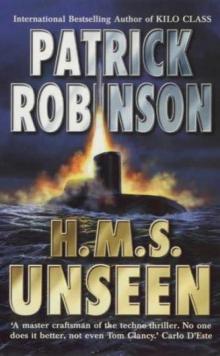 H.M.S. Unseen am-3
H.M.S. Unseen am-3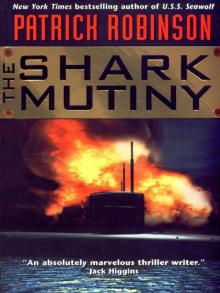 The Shark Mutiny (2001)
The Shark Mutiny (2001)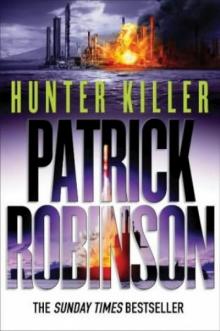 Hunter Killer am-8
Hunter Killer am-8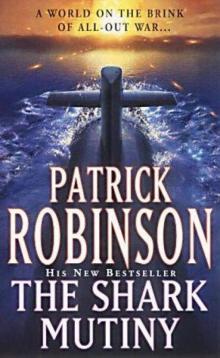 The Shark Mutiny am-5
The Shark Mutiny am-5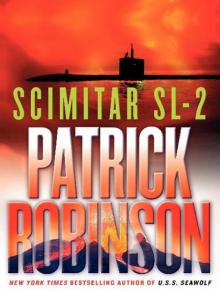 Scimitar SL-2
Scimitar SL-2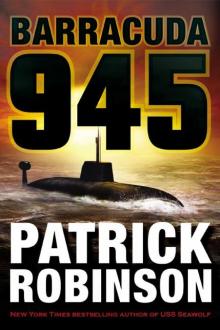 Barracuda 945 am-6
Barracuda 945 am-6 Hunter Killer
Hunter Killer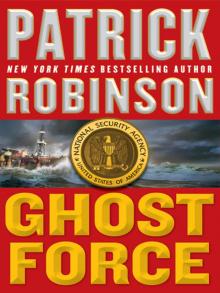 Ghost Force
Ghost Force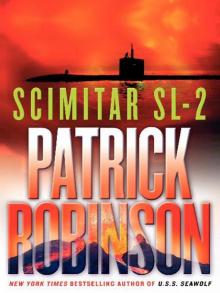 Scimitar SL-2 (2004)
Scimitar SL-2 (2004) Kilo Class am-2
Kilo Class am-2 The Lion of Sabray
The Lion of Sabray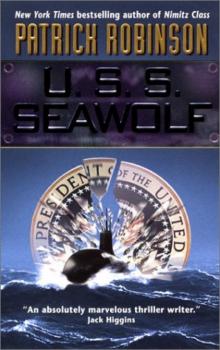 U.S.S. Seawolf am-4
U.S.S. Seawolf am-4 Ghost Force am-9
Ghost Force am-9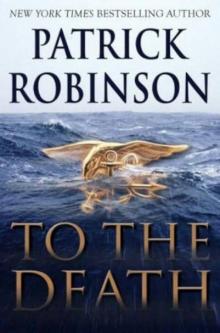 To the Death am-10
To the Death am-10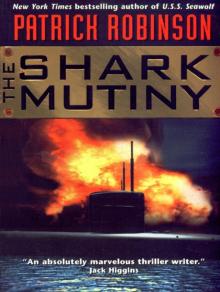 The Shark Mutiny
The Shark Mutiny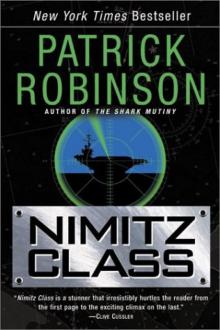 Nimitz Class am-1
Nimitz Class am-1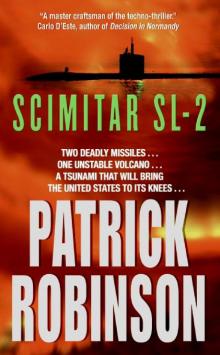 Scimitar SL-2 am-7
Scimitar SL-2 am-7 Barracuda 945
Barracuda 945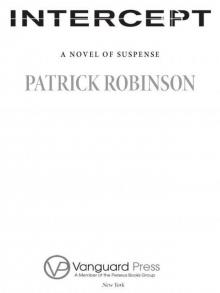 Intercept
Intercept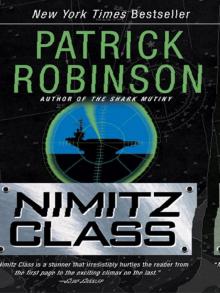 Nimitz Class (1997)
Nimitz Class (1997)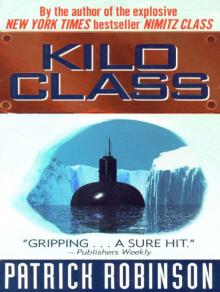 Kilo Class
Kilo Class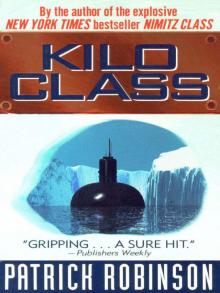 Kilo Class (1998)
Kilo Class (1998) Diamondhead
Diamondhead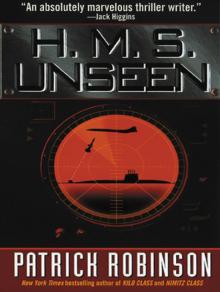 H.M.S. Unseen
H.M.S. Unseen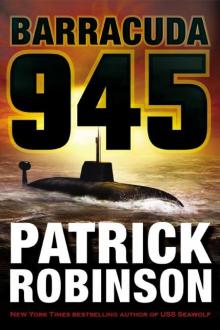 Barracuda 945 (2003)
Barracuda 945 (2003)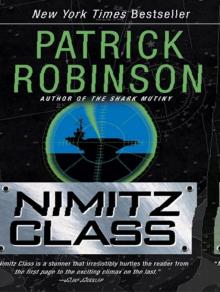 Nimitz Class
Nimitz Class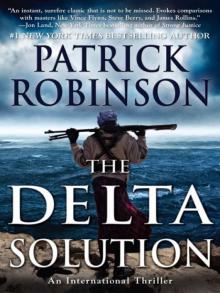 The Delta Solution
The Delta Solution U.S.S. Seawolf
U.S.S. Seawolf